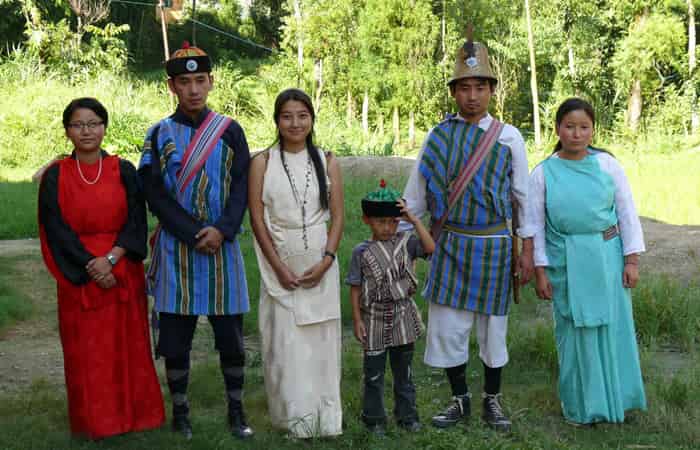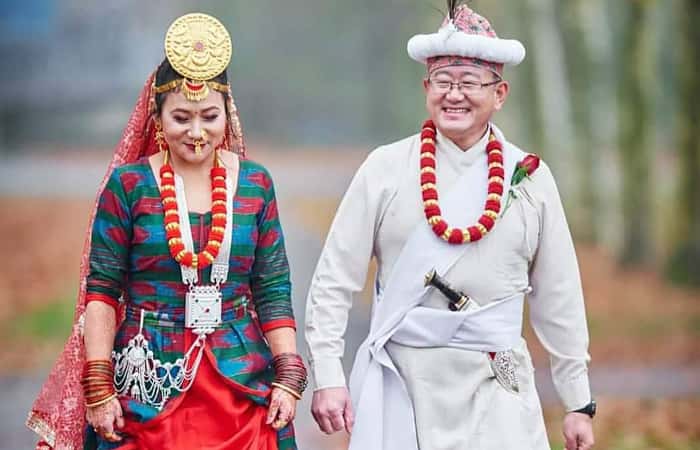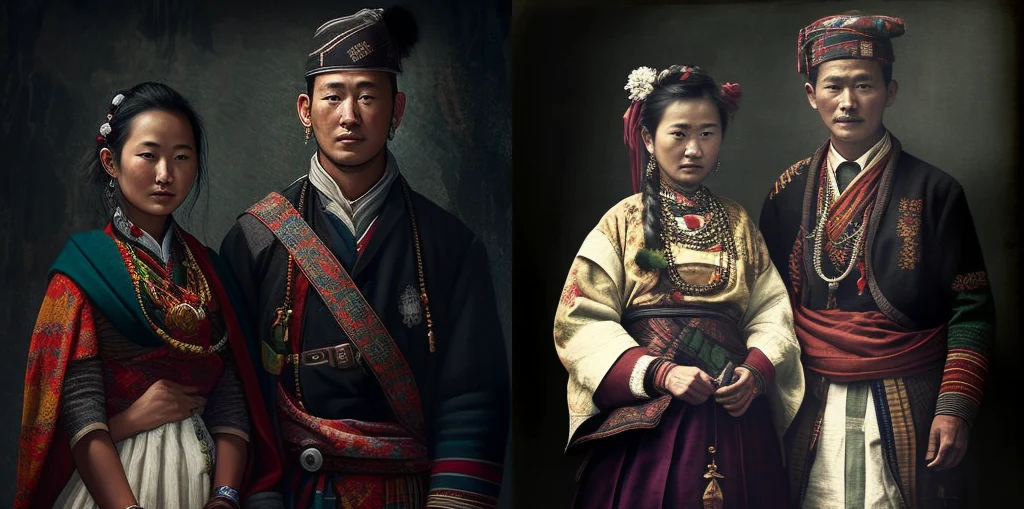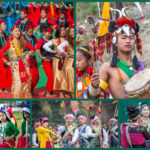Sikkim, known for its tranquil rivers, breathtaking landscapes, captivating dance forms, and delectable cuisine, also boasts a rich tapestry of traditional attire that reflects its cultural diversity. The traditional dress of Sikkim is a vivid representation of the state’s heritage and varies significantly across different tribes. This article explores the fascinating traditional dresses worn by men and women in Sikkim, highlighting their unique characteristics and cultural significance.
Traditional Dress of Sikkim: An Overview

In Sikkim, traditional attire is often classified according to the tribe’s status, with distinct variations for each group. Here’s a closer look at the traditional dresses worn by the main tribal communities of Sikkim:
Bhutia Tribal Dress
The Bhutia community’s traditional attire includes the Bakhu, a versatile garment worn by both men and women. The Bakhu resembles the Tibetan chuba, consisting of a loose cloth wrapped around the body and secured with a silk or cotton belt at the neck and waist. Women complement the Bakhu with a Honju, a fully-sleeved silk blouse, and a Kushen, a jacket that adds an extra layer. Recently, modern variations have emerged, such as pairing the Bakhu with jeans for a contemporary twist.
Lepcha Tribal Dress
For the Lepcha tribe, the traditional attire for men features a Dumpraa, a striped waistcoat of various colors, which is pinned at the shoulder and secured with a waistband called Gyatomu. This waistcoat is typically worn over a white shirt and ankle-length trousers. A traditional cap, Sumok Thyaktuk, completes the look. Lepcha women wear a distinctive ankle-length dress called Dumden, paired with a loose-fitted blouse known as Tago and a waistband called Naamrek to keep the blouse in place. The traditional cap, Gorey, adds a touch of elegance to the outfit.
Nepalese Tribal Dress
With around 80% of Sikkim’s population being Nepalese, their traditional attire is prominent. Nepalese men wear a Daura, a broad knee-length coat paired with Suruwal, loose trousers. The outfit is enhanced with a waistcoat known as Askot, a cap called Dhaki Topi, and a belt called Patauki. Women typically wear a Pharia, which is similar to a saree in vibrant colors like yellow or red, paired with a Chaubandi Cholo, a long-sleeved top. Alternatively, they may opt for a Hembari, a large floral-printed cloth covering from head to toe, along with a Majetro shawl and Pacheuri headgear. They also carry a sharp weapon called Khukri in a leather case known as Daab.
Thokro-Dum
Another significant outfit of the Lepcha community is the Thokro-Dum, which consists of long
white pajamas up to the calves, reminiscent of martial arts attire. It is paired with a Lepa shirt, Yenthatse, and Shambo, complemented by an embroidered cap. The shorter length of the pajamas reflects the Lepchas’ marshy land origins, while the durable material is practical for their agricultural work.
Traditional Wedding Attire of Sikkim

Sikkim’s traditional wedding attire is characterized by elegance and grandeur. The bride and groom don exquisite ceremonial outfits made from the finest silk. The groom typically wears a traditional Bakhu paired with loose trousers, stylish leather shoes, and a silky turban known as Topi.
For brides, the attire includes the Kho, a full-length silk garment adorned with intricate designs and patterns. The Kho is complemented by a colorful Pangden apron and Pangkham headgear, which consists of large, multicolored scarves that add to the bridal elegance.
Traditional Jewelry of Sikkimese Women
Jewelry plays a crucial role in Sikkimese traditional attire, varying by community:
- Bhutia Jewelry: Bhutia women adorn themselves with Joko (rings), Phiru (pearl jewelry), Yencho (earrings), Diu (gold bangles), Khalli (anklets), and Khao (thick anklets). There is a notable preference for pure gold in their jewelry.
- Nepalese Jewelry: Nepalese jewelry includes Sir-Bandi (bejeweled tiara), Kantha (necklace), Naugeri (pearl necklace), and Charanihari (necklace). These pieces are stunningly paired with traditional Nepalese attire.
- Lepcha Jewelry: Lepcha women wear Lyak (necklaces), Namchok (earrings), and Gyar (necklaces), often adding small bracelets. Gold and silver are the primary metals used in these ornaments.
Conclusion
The traditional dress of Sikkim is a vibrant tapestry that showcases the state’s rich cultural diversity and heritage. Each tribe’s attire tells a story of their history and identity, from the majestic Bakhu to the colorful Pharia. The traditional wedding outfits are particularly striking, with intricate designs and precious metals reflecting the elegance of Sikkimese ceremonies. The traditional dress of Sikkim is not merely clothing but a profound expression of the people’s cultural essence and enduring traditions.


